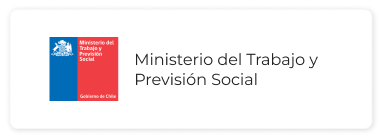The project aims to facilitate and improve the care of female users who are victims of gender-based violence and are served through the digital channels of SernamEG by designing and implementing an integrated platform for case registration and follow-up (Care, Protection, and Repair Program for Violence against Women by SernamEG).
Project Brief
- Project Name: Telephone and Telematic Support System (SATT) of the National Women’s Service and Gender Equity (SernamEG).
- Sponsor: National Women’s Service and Gender Equity through the Inter-American Development Bank (BID).
- Start: 11/15/2023.
- Innovation: AI Voice to Text.
- Users: Women and SernamEG staff.
Main benefits of the system:
The SATT operates based on strengthening the service delivery system and program management to respond to and prevent gender-based violence in Chile, focusing on the following pillars:
- People who contact the telephone and telematic support system will receive more informed and objective attention from the teleoperators.
- The development using service design will improve the usability of the system for all linked profiles.
- The incorporation of voice-to-text and AI will enhance the support provided by teleoperators, lawyers, psychologists, and supervisors.
A project based on Service Design.
Service design is a roadmap that includes the steps and processes a user will follow when using a service. The ultimate benefit of service design is not to improve the aesthetic appearance of a tool or project, but to enhance its operability and efficiency.
Service design is a multi-departmental reflection process aimed at deconstructing the user’s interaction and experience with the service and reconstructing it for improvement. It means viewing the service from the user’s perspective and putting oneself in their shoes. Therefore, service design is both a science and an art.

AI at the service of women in situations of vulnerability.
Due to the magnitude and complexity of the challenge, artificial intelligence can assist in the early identification of cases, risk prediction, and timely intervention.
It would allow for the detection of abusive behavior patterns, facilitate assistance to victims, and improve education and awareness on this topic. This is always within the context of appropriate governance that defines regulatory frameworks, guidelines, and standards necessary to mitigate risks, address ethical issues, and protect individual rights and societal well-being.
Within the components of the Comprehensive Care Model, such as the helplines for women victims of violence, AI tools are implemented to assist teleoperators, generating the following capabilities:
- Generate a summary of the history of support and referrals made by the different network devices based on the phone number and/or the person being assisted to achieve more personalized care. Currently, teleoperators do not have access to contextual information to personalize the assistance.
- Transcription of the call and identification of patterns to alert the teleoperator about relevant factors to consider in the conversation (e.g., presence of a weapon).
- Identification of risk patterns to assist the teleoperator in developing the vital risk assessment guide.
- Guide the teleoperator on possible referrals within the established institutional route.
- Generation of records for monitoring and tracking statistics.
All these advancements and improvements aim to strengthen the Care, Protection, and Repair Program for Violence against Women by SernamEG, and through it, to empower and protect women victims of violence.




















